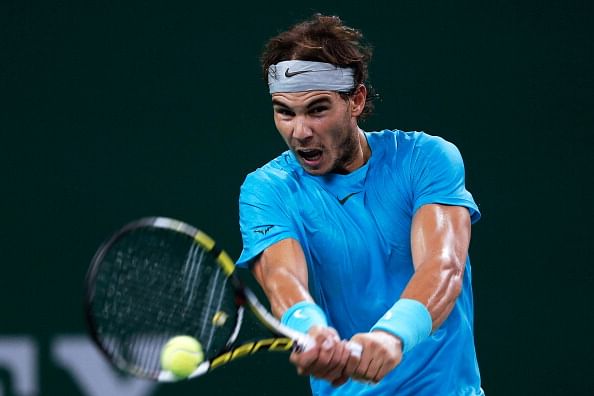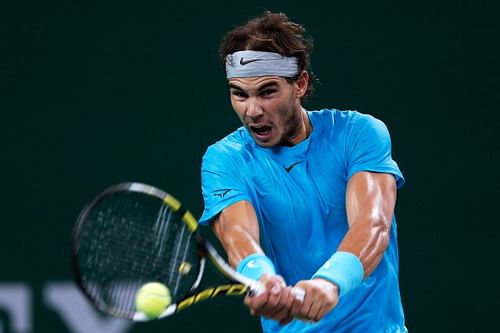
A tribute to Rafael Nadal

Rafael Nadal
With the scintillating season that Rafael Nadal is experiencing, the never ending debate of who the greatest player of all time is has been ignited once again. Nadal has 13 Grand Slams in the bag already and with the kind of form Federer has shown in the past few years, surpassing the mark of 17 is very much a possibility. He has the calendar Slam and is the all time leader in the ATP 1000 Masters. Along with that he has also won the Davis Cup and an Olympic gold.
All those glittering achievements have attracted many fans and won numerous hearts. But what I admire most about Rafael Nadal is how he has become what he is today.
I have been a Nadal fan since the beginning. I started following the game avidly in the year 2005 and that was the year when Nadal won Roland Garros on debut. I could relate to his style. The never-say-die attitude and the exceptional will to win despite the odds being stacked against you. I have seen the 18-year-old clay courter become a 26-year-old all-conquering tennis phenomenon and that transition is what has made me idolize him.
When Rafael Nadal burst on to the tennis stage, his game was extremely suited to clay. He relied on his huge forehand accompanied with vicious spin on it and an ultra fit body which let him run down all balls, for his victories. The backhand and serve were susceptible. Add all that to the baseline game he had and you had the perfect clay court player.
Nadal succeeded immensely on clay right from the start but he did struggle to a certain extent on the other surfaces. He never rested on his prowess of mastering a particular surface but strove for betterment and achieved it.
Nadal belonged to a nation which had produced some great players like Carlos Moya and Juan Carlos Ferrero, but these guys too like other Spaniards were mostly successful on clay. Their level of success dropped when other surfaces were considered. It would have been pretty easy for Nadal to take their example and sit back to be only a clay court specialist. He never did that. He went from strength to strength and conquered all that was possible.
His victory at Wimbledon, on a surface (grass) not suited to his game at all, highlighted his capability to play on all courts. He subsequently won the Olympic gold in Beijing, the Australian Open and finally the US Open, all on hard courts, to establish himself as the ultimate conqueror. His recent run on hard courts speaks for itself. Amidst all that, his form on clay was as constant as ever, which was incredibly commendable.
Another thing that strikes you about Nadal is the quality of opposition he has had to go through. He had to face Roger Federer at his peak, one of the greatest players tennis has ever seen. Nadal was placed a record number of weeks on the second spot in the ATP singles ranking below Roger Federer. To see a person ahead of you for close to 3 years, to see that player look invincible – that is more than enough to lose hope. But Nadal never stopped working hard. Nothing deterred him from achieving his dream of reaching the top and he did so with style. He became world number 1 not because of Federer being injured but because of his own success.
The reason behind Nadal’s success was not the dip in form of others but the fact that his game grew by leaps and bounds. The dangerous forehand was ever present. In fact, it got even better. He started to flatten it out at times which is so important for the faster courts. His backhand became extremely solid. The net game took a forward jump as well. The most striking improvement was the serve. From that Roland Garros in 2005 to the US Open in 2010, the difference in his service was evident. Nadal was hitting fast and hard serves by 2010. The effectiveness of that serve was great that he was broken for the first time only at the semi–final stage. To break Nadal is a very difficult task, not only in that tournament but in general.
The mental strength of Rafael Nadal is supreme. He is a true believer in the saying that a match is not over until it’s over. The mental strength displayed by him to defeat Federer in the finals of Wimbledon 2008 was tremendous. In the Australian Open 2009, Nadal played a 5-hour plus semi final against Verdasco and then again beat Federer in a pulsating 5-set final. Against Nadal, it is one thing to reach the break point but converting it is altogether another story. In addition to all this, the mental strength he has displayed to return from injuries and and get back to his old level is immense.
I am a Nadal fan. Not because of what he has achieved but because of the odds he defied to achieve it. The Spaniard changed his game and surpassed the most decorated player in tennis by far. I have witnessed the transition from 2005 till date and I bow to that.
Vamos Rafa!